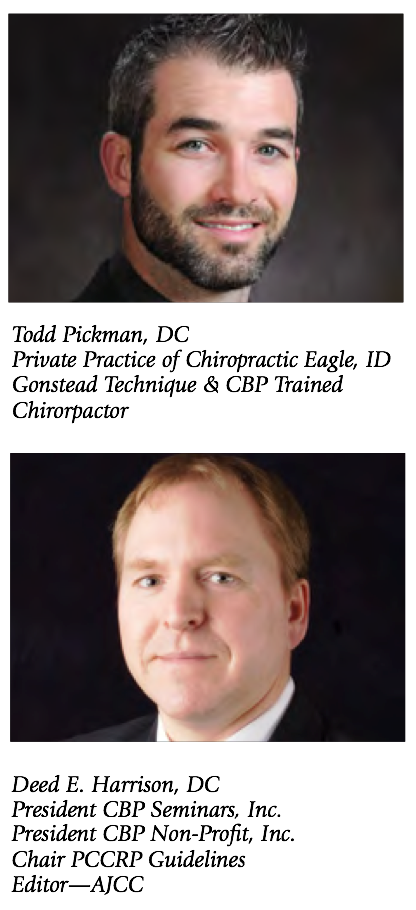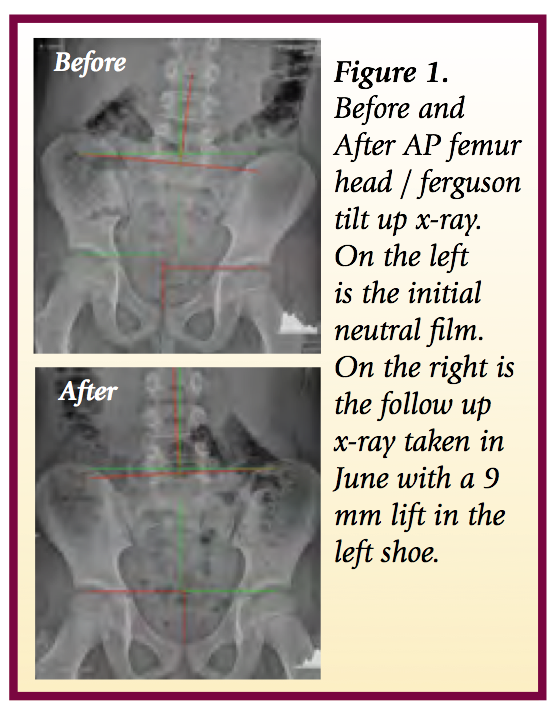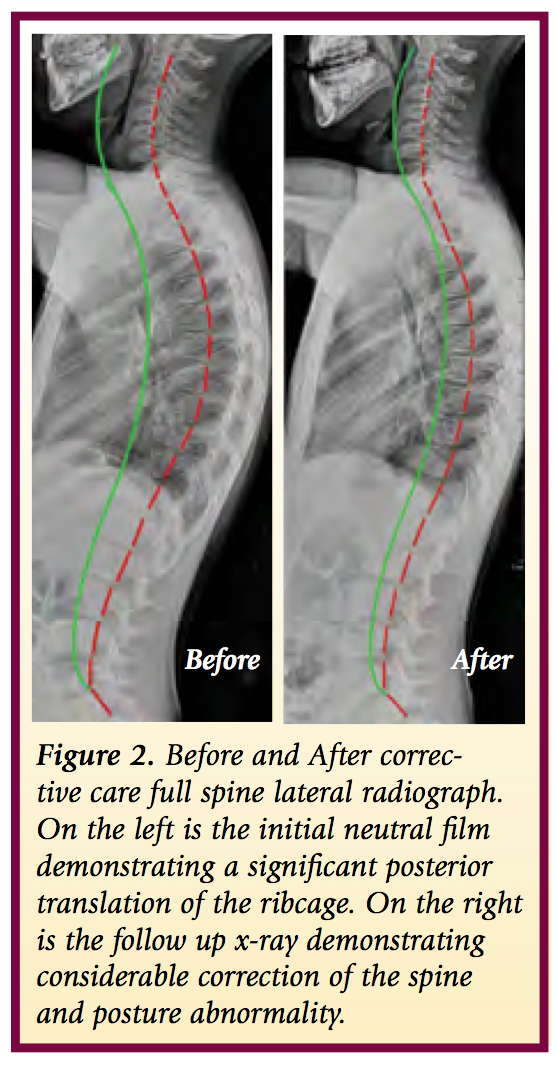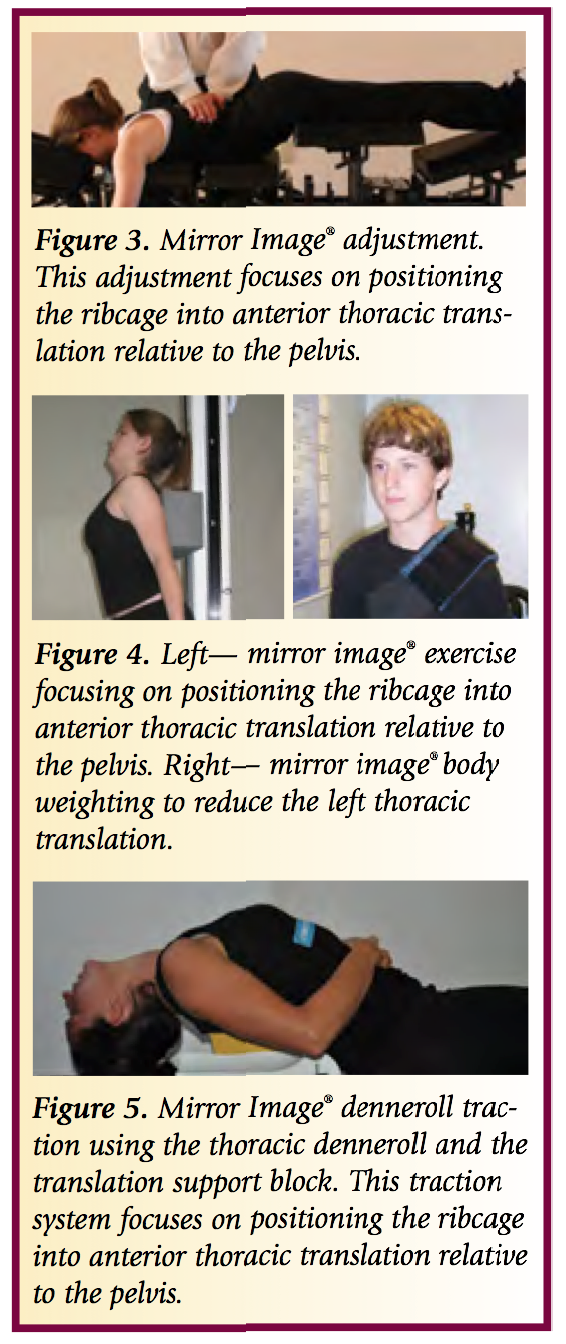Combining Specific Chiropractic Adjusting Techniques with CBP Corrective Care Techniques: Case #2.
 Sunday, January 20, 2013 at 11:17AM
Sunday, January 20, 2013 at 11:17AM  INTRODUCTION
INTRODUCTION
In our previous article (AJCC October 2012)1, we suggested that the astute Chiropractor should become skilled at administering both a segmental specific adjustment technique (such as the Gonstead system) and a full spine corrective technique like Chiropractic BioPhysics (CBP). In this manner, patients will experience the benefits of segmental motion restriction improvement and the restoration of proper full body and spine alignment. The case presented herein attempts to provide further rationale for the combination of these two uniquely distinct, but complimentary full spine Chiropractic Technique systems.
CBP / Gonstead Case Study #2:
In 2012, an 8 year old male, who had no overt symptom complaints was brought to the author's (T.P) Chiropractic clinic for postural evaluation and a spinal checkup. His parents had noticed significant posture abnormality and were concerned about underlying spinal disorders.
- Postural Analysis: Posture analysis revealed a significant left thoracic translation, a right lateral flexion of the ribcage, a right posterior pelvic rotation, a suspected left leg length inequality, a large posterior thoracic translation, and a slight forward head translation.
- Radiographic Analysis:
- In April of 2012, a modified AP femur head-ferguson view was obtained. On the left of Figure 1, this x-ray is shown. The PostureRay x-ray software system was used to identify and quantify the extent of leg length inequality. A 9mm left leg length inequality was identified with consequent spine abnormality.

2. In April of 2012, a full spine lateral radiograph was obtained. While in June of 2012, a follow up full spine lateral was obtained to document the response to intervention and potential modifications that might be warranted. Figure 2 depicts these full spine radiographs

- Interventions: A total of 24 treatment sessions over the course of 2 months was utilized in this case.
For segmental adjusting technique, the treating Chiropractor (TP) exclusively adhered to and utilized the Gonstead Technique system for identified spine subluxations including:
- Abnormal temperature differential patterns (nervo-scope / tempo-scope).
- Static palpation data indicating the presence of edematous tissue around the injured segment.
- A decrease in motion of the segment in question, as compared to the surrounding area.
- Palpable muscle spasm or splinting around the area in question.
- Visualization of the area (looking for presence of pitting edema, asymmetry in the tissues, etc).
- Then, consulting the 3-shot, digitally stitched, AP full spine x-ray and the lateral (2 shot) full spine x-ray to analyze the “foundation principle” and relate this to the examination findings.
For the full spine and posture corrective care, CBP® mirror image® adjusting, exercise, traction procedures were utilized. Additionally, body weighting using the thoracic belt from Circular Traction was applied 5 times per week for 15 min walking intervals. These procedures were administered on each visit to the patient. Lastly, a full foot lift of 9 mm was administered to the patient and was placed in the left shoe.
- Mirror Image Adjustments
The patient was administered mirror image adjustments to correct posterior thoracic translation with hyper-kyphosis and anterior head translation with head flexion postures. See Figure 3.
- Mirror Image Exercises
The patient was administered mirror image® exercises to correct posterior thoracic translation with hyper-kyphosis and anterior head translation postures. See Figure 4.
- Mirror Image® Body Weighting and Denneroll Traction
Mirror Image traction care was administered to the patient. The patient received the denneroll traction system to correct the abnormal thoracic translation posture as shown in Figure 5. In addition the patient was instructed in the use of the denneroll thoracic orthotic and was advised to do this 5 times per week at home.

- Case Outcome
Subjectively, at the end of 2 months of corrective care, the patient's posture was remarkably improved. NRS = 1-2 / 10. According to the patient's parents, in their own words, "It’s great to see how quickly he has improved. The leveling of his shoulders and hips is apparent and how he carries himself; he is dramatically more upright and balanced".
Objectively, the patient's follow up full spine radiographs in Figure 2 show remarkable reduction of the spinal displacements.
CONCLUSION
The authors' opinion is that the patient's improvements were directly related to both the segmental adjusting and spinal corrective procedures applied using CBP Technique. Accordingly, for optimum patient response, traditional Chiropractic adjustments would seem to be enhanced by the addition of spinal corrective procedures as in CBP. In the end, it is the positive response of the patient that should dictate this combined approach of classical Chiropractic care, with more contemporary corrective Chiropractic systems.
References
- http://www.chiropractic-biophysics.com/clinical_chiropractic/2012/12/18/combining-specific-chiropractic-adjusting-techniques-with-cb.html
 CBP Seminars | Comments Off |
CBP Seminars | Comments Off |  CBP,
CBP,  Chiropractic BioPhysics,
Chiropractic BioPhysics,  Gonstead technique
Gonstead technique 

